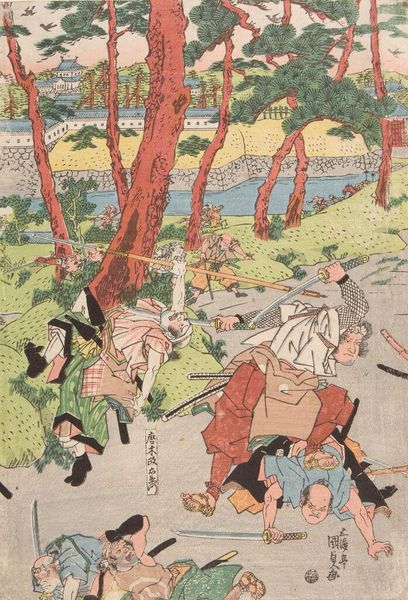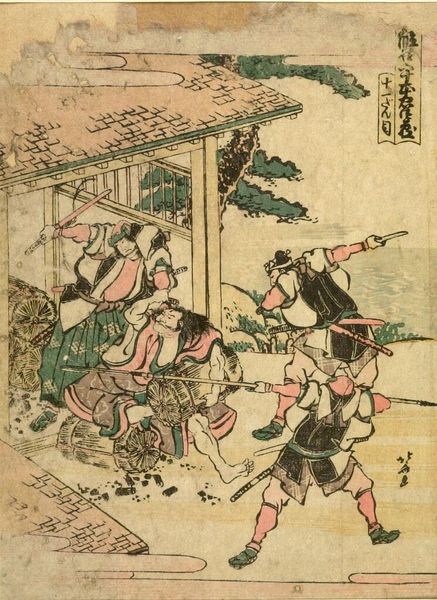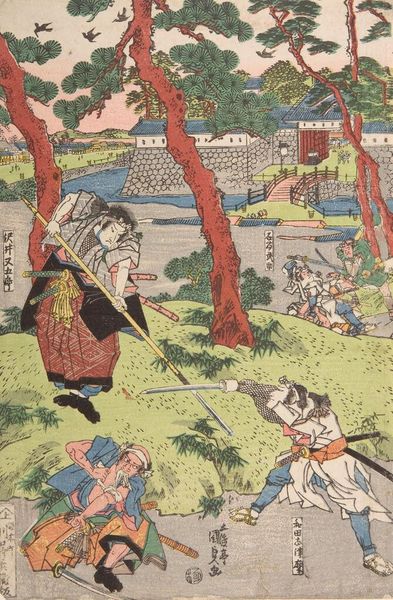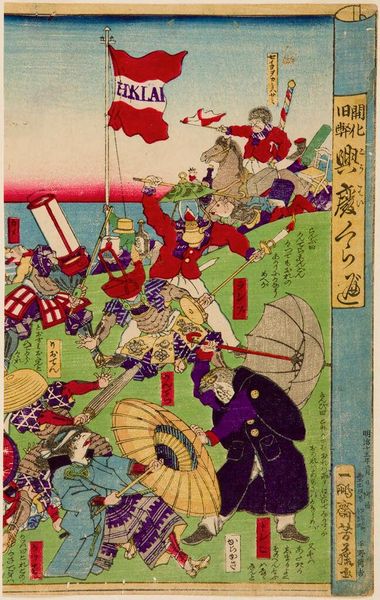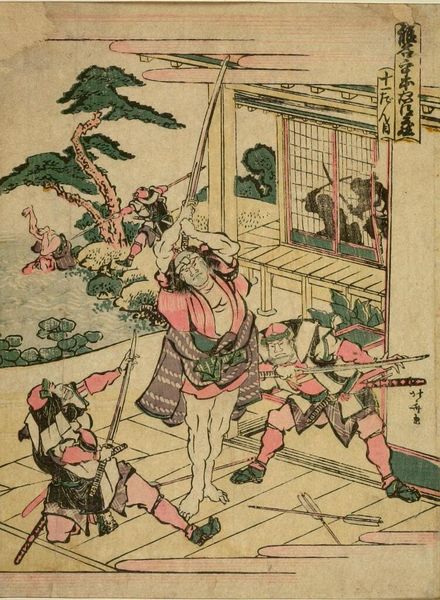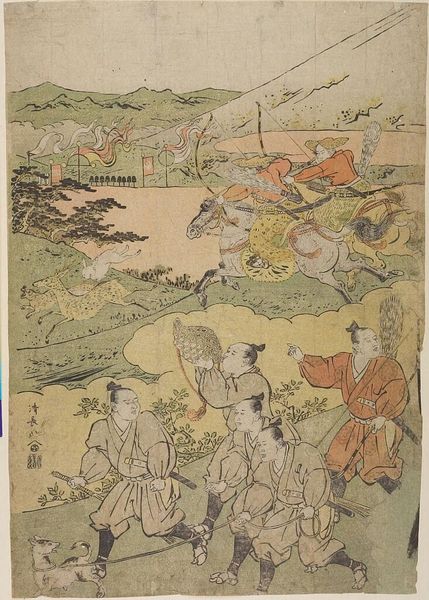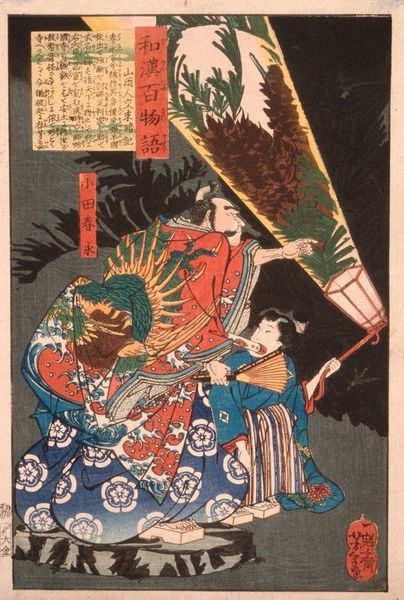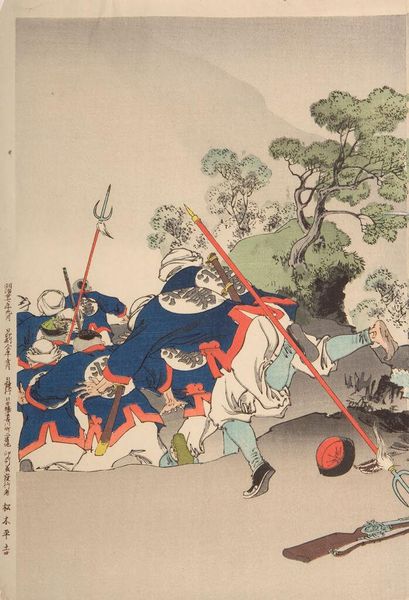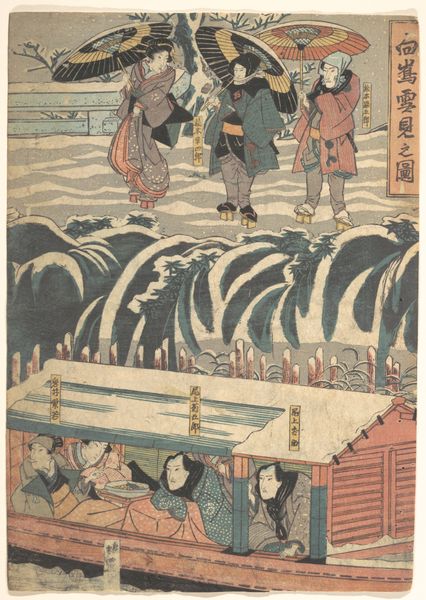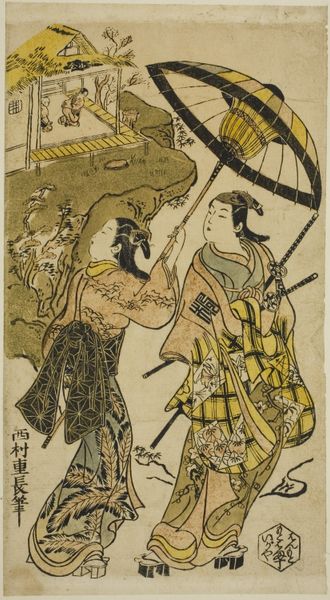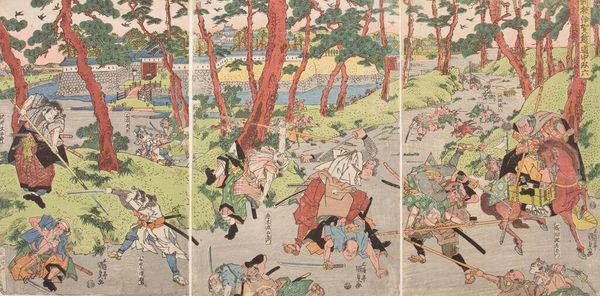
Dimensions: 37.1 x 25.4 cm (14 5/8 x 10 in.)
Copyright: CC0 1.0
Curator: This woodblock print, "Shimpan Iga goe dochu Sugoroku," is by Utagawa Kunisada, who passed away in 1865. The piece is currently held at the Harvard Art Museums. It’s quite dynamic, isn’t it? Editor: Yes, it's a whirlwind of activity! I’m immediately struck by the sheer chaos of the scene; there’s a sense of violence and struggle. What historical event is being depicted? Curator: It seems to picture a scene of conflict, likely referencing a historical drama popular in Edo-period Japan, playing with themes of loyalty, betrayal, and social upheaval. Woodblock prints like this were often disseminated widely, impacting public understanding and engagement with such narratives. Editor: The way the figures are rendered – look at their exaggerated expressions and poses – feels almost theatrical, amplifying the drama. But how do we read this through a contemporary lens, considering today’s discourse on violence and representation? Curator: It is important to acknowledge the historical context. Kunisada’s print, made using woodblock techniques, was consumed by a broad audience, shaping perceptions of power, conflict, and social order. It's crucial to analyze the power dynamics at play, looking closely at who is wielding power and on whom violence is being inflicted. Editor: Thinking about the audience, do you think they viewed this image as an exoticized adventure, a moral lesson, or something else entirely? Curator: I imagine there was an element of escapism, a chance to vicariously experience a world far removed from their daily lives, but it also served as a commentary on the social and political landscape of the time. Editor: Seeing it this way offers a more nuanced view of Edo-period society and its relationship with art.
Comments
No comments
Be the first to comment and join the conversation on the ultimate creative platform.
